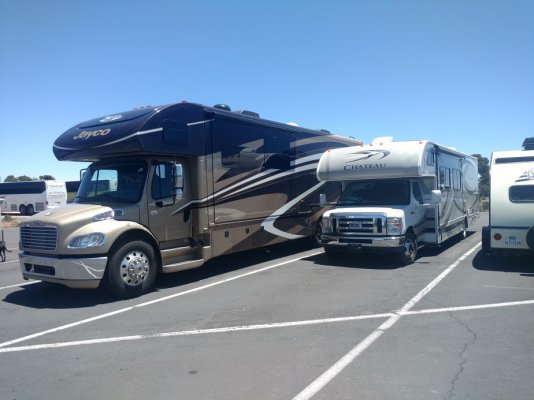The biggest factor is what JD Gallant described over 20 years ago as the wheelbase to length ratio of the motorhome.
If the rear axle is well forward so you have a long rear overhang (wheelbase to length ratio of approximately 50% or less) side wind forces will center at or behind the rear axle, pushing the rear more to the side than the front. This creates the need to constantly correct the steering as you go down the road, first steering one way and then the other as side winds come and go.
A long wheelbase to length ratio (60% or higher) causes the wind forces to center between the axles. The motorhome may lean but isn't pushed off course as much as one with a shorter wheelbase to length ratio.
Most motorhomes fall somewhere in between these examples, but there are exceptions in both directions.
For example, the Class C in
this picture with it's very short wheelbase to length ratio has a lot of sail area behind the rear axle and will be a handful in side winds no matter what you do to beef up the suspension.
I had a 1994 Damon Intruder gas powered motorhome similar to
this picture with a long wheelbase to length ratio and even with just the stock suspension it was very stable on the highway.
It's a tradeoff between stability and maneuverability. School buses that need to maneuver around narrow roads and sharp corners have short wheelbases and long rear overhangs.
Greyhound and other highway buses have the opposite ... longer wheelbases and shorter rear overhangs for higher stability at highway speeds, at the expense of low speed maneuverability.

